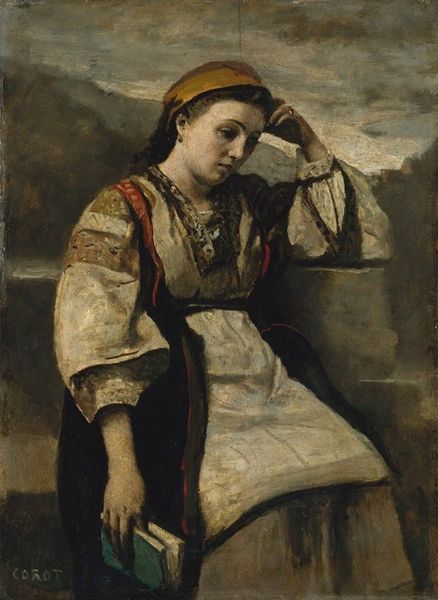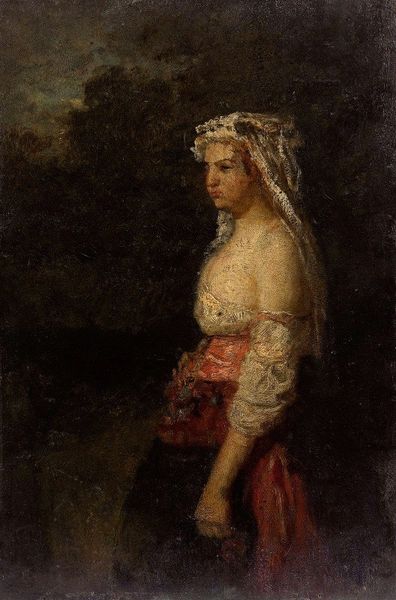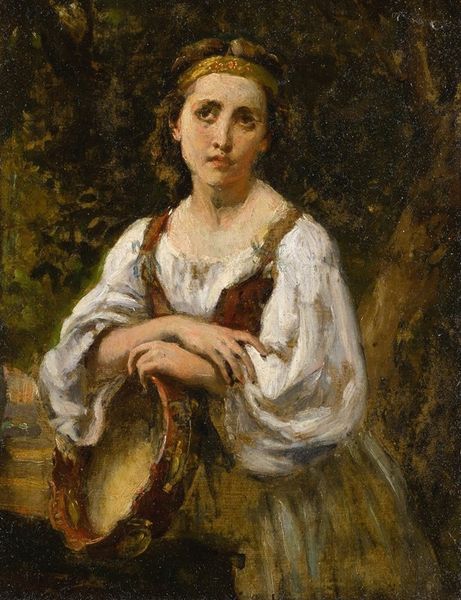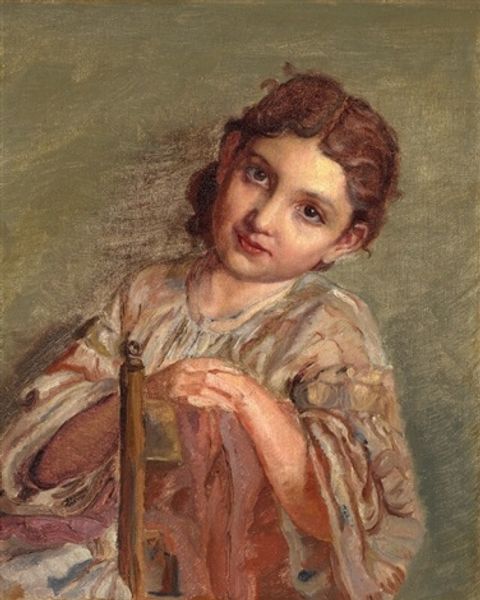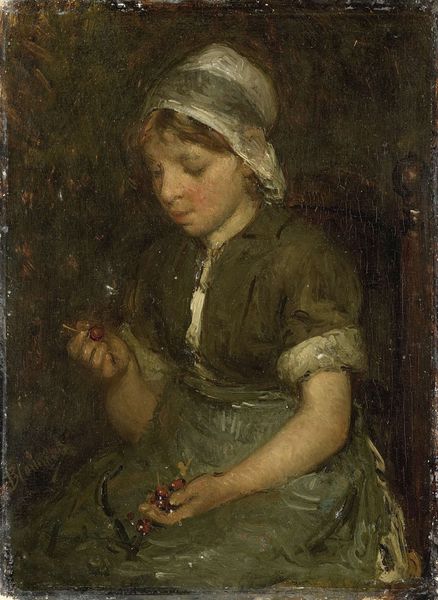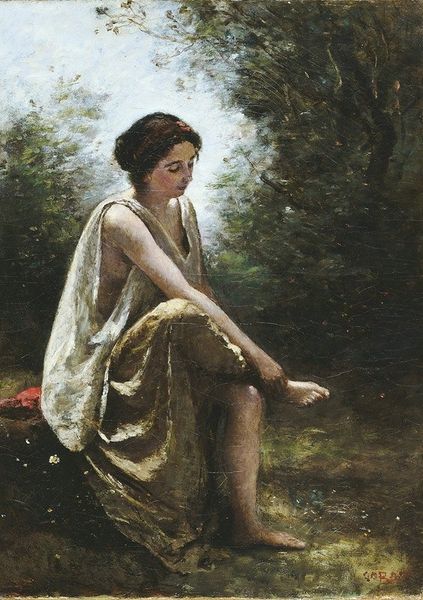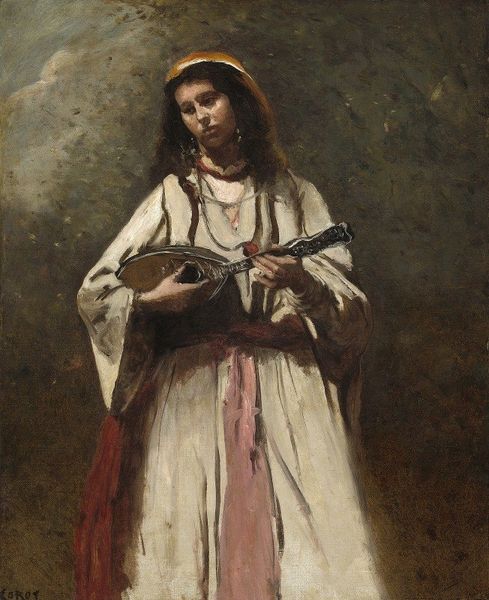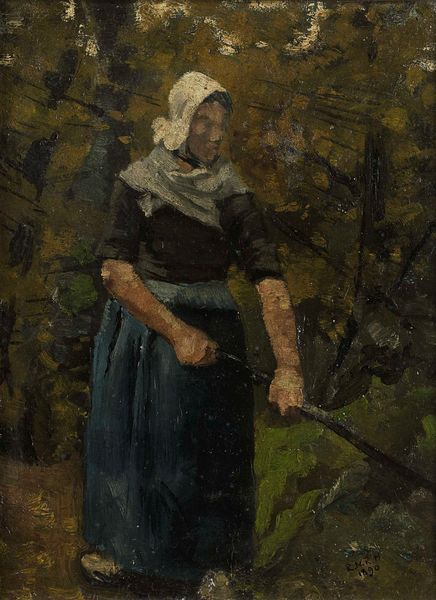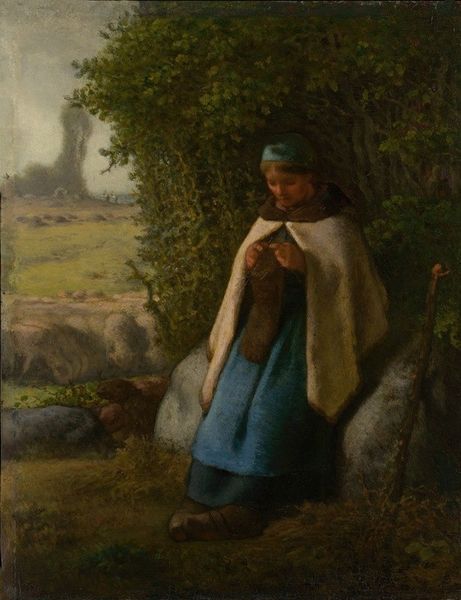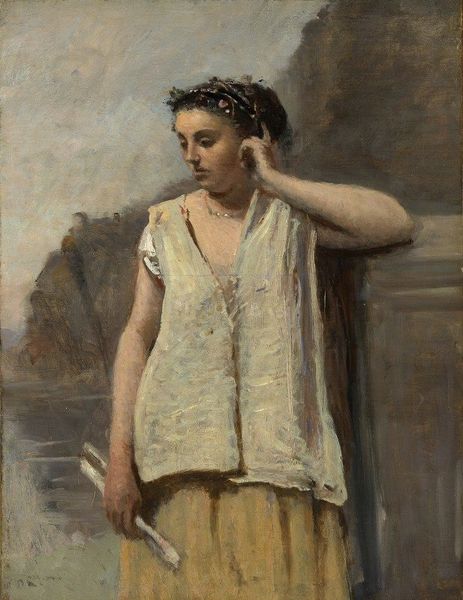
Copyright: Public Domain: Artvee
Editor: So, this is Camille Corot's "Girl Weaving a Garland," painted sometime between 1860 and 1865, using oil paints. I find the whole scene so gentle, like a whispered secret. There's something melancholic about it. What do you see in this piece? Curator: Melancholy, absolutely. Corot captures these fleeting moments of reverie with such tenderness. He’s often called a Barbizon painter, deeply rooted in the landscape. But what interests me most here is how he’s blurring the lines between a portrait, a genre scene, and almost a dreamlike landscape. Notice the loose brushwork – does it evoke something for you? Like a memory perhaps? Editor: It feels less about sharp details and more about a feeling, like when you try to remember something hazy. So he’s not just painting what he *sees*, but what he *feels*? Curator: Precisely! And that's where the magic lies. This isn't a literal transcription of a girl in a field; it's an evocation of innocence, of simple beauty found in nature. The garland she weaves…is it a crown? A symbol of ephemeral joy? Is the muted palette significant in any way, in your opinion? Editor: Hmm... maybe the muted colours suggest the fading of summer, a transition? Perhaps she represents that delicate balance between youth and maturity? It is beautifully bittersweet! Curator: I love your interpretation! The transient nature of beauty – Corot captures it perfectly, don’t you think? This dialogue is prompting me to imagine she's weaving a memory rather than merely flowers. Editor: Exactly. It gives a lot more resonance, when we think about the nature of memory. That little twist completely shifted my understanding! Curator: It just underscores how art enriches the simple present, doesn’t it?
Comments
No comments
Be the first to comment and join the conversation on the ultimate creative platform.
